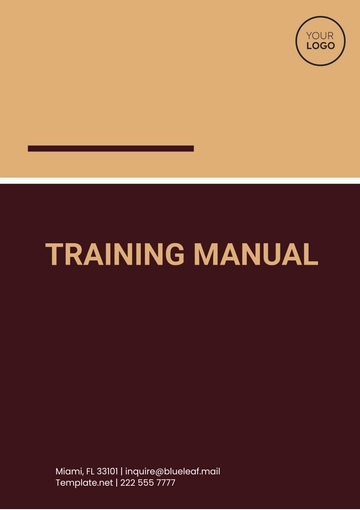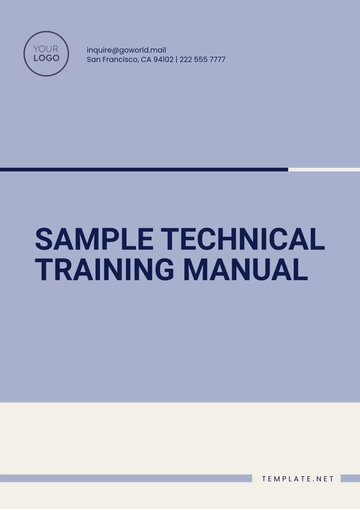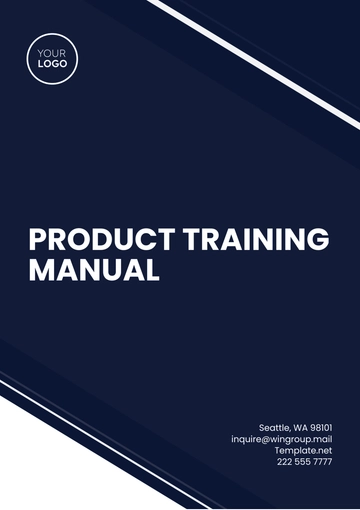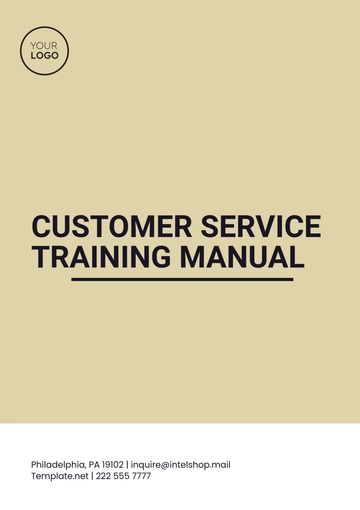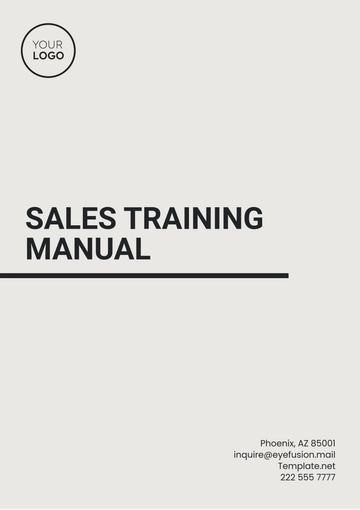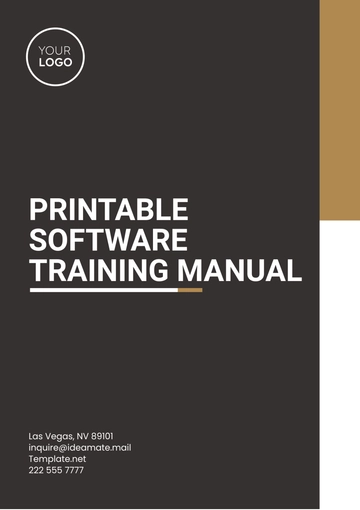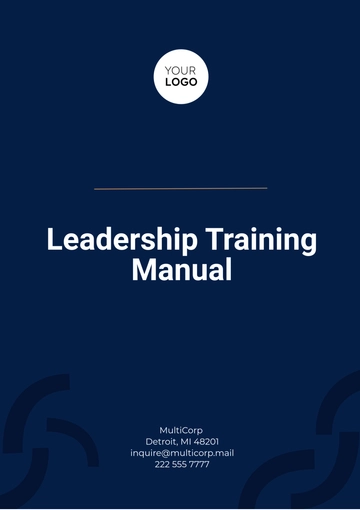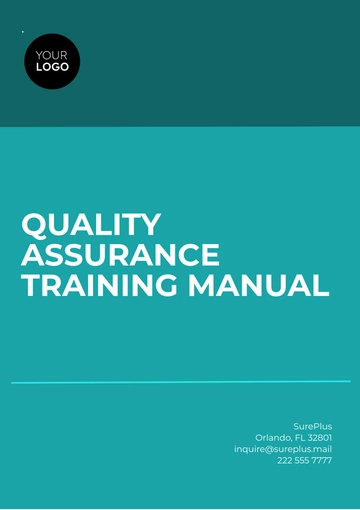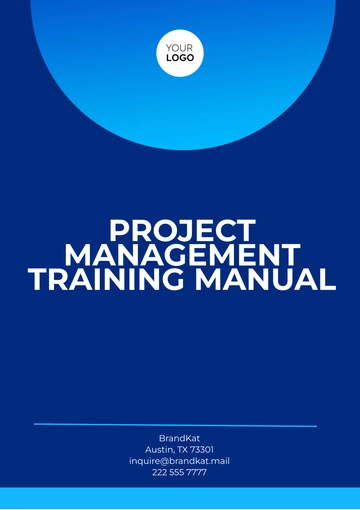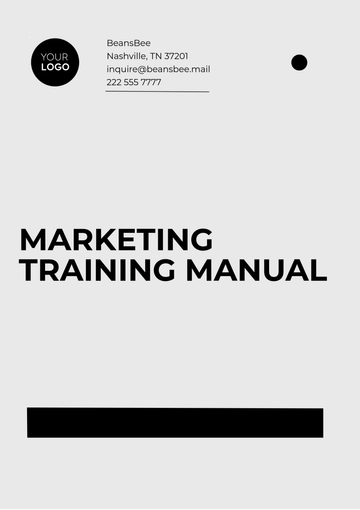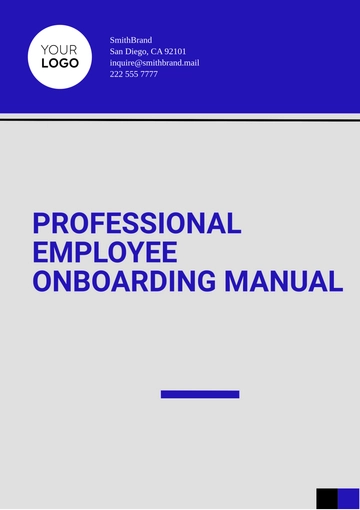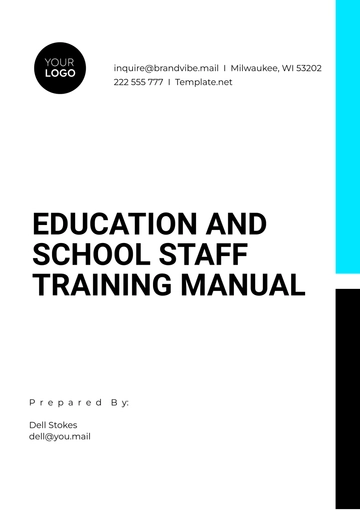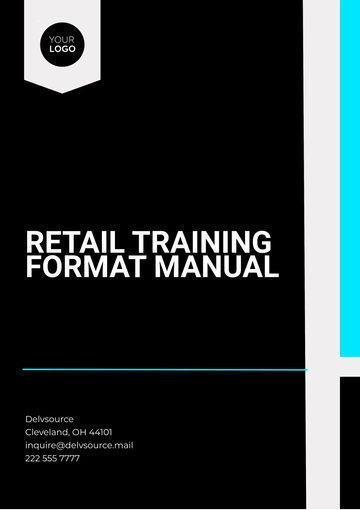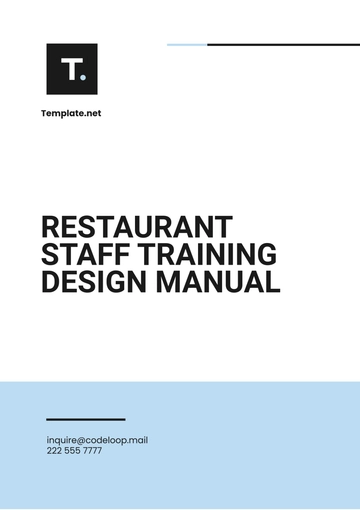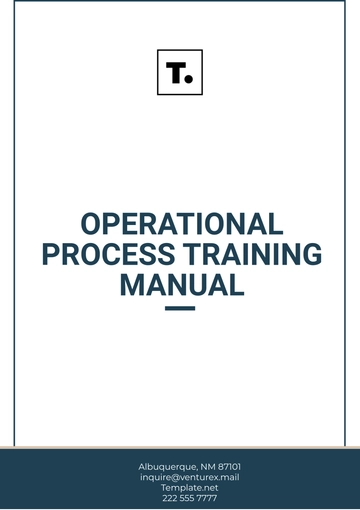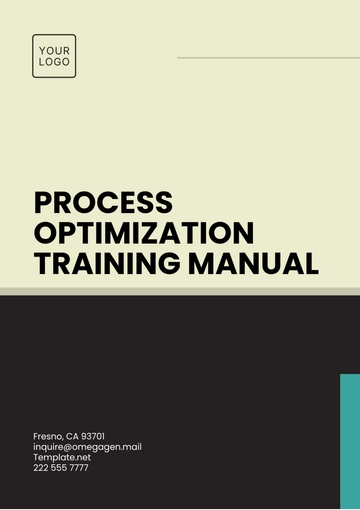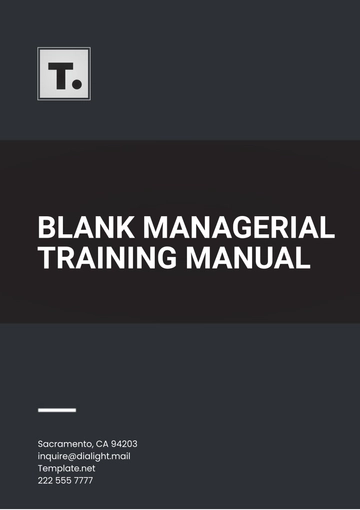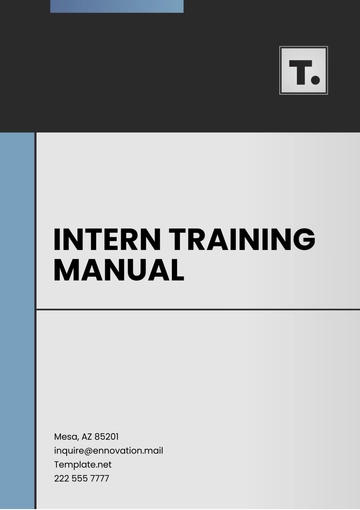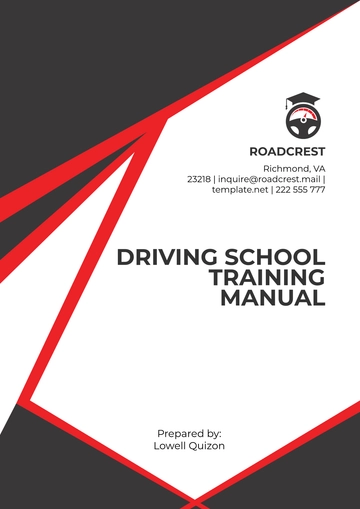Free Sales Lead Training Manual
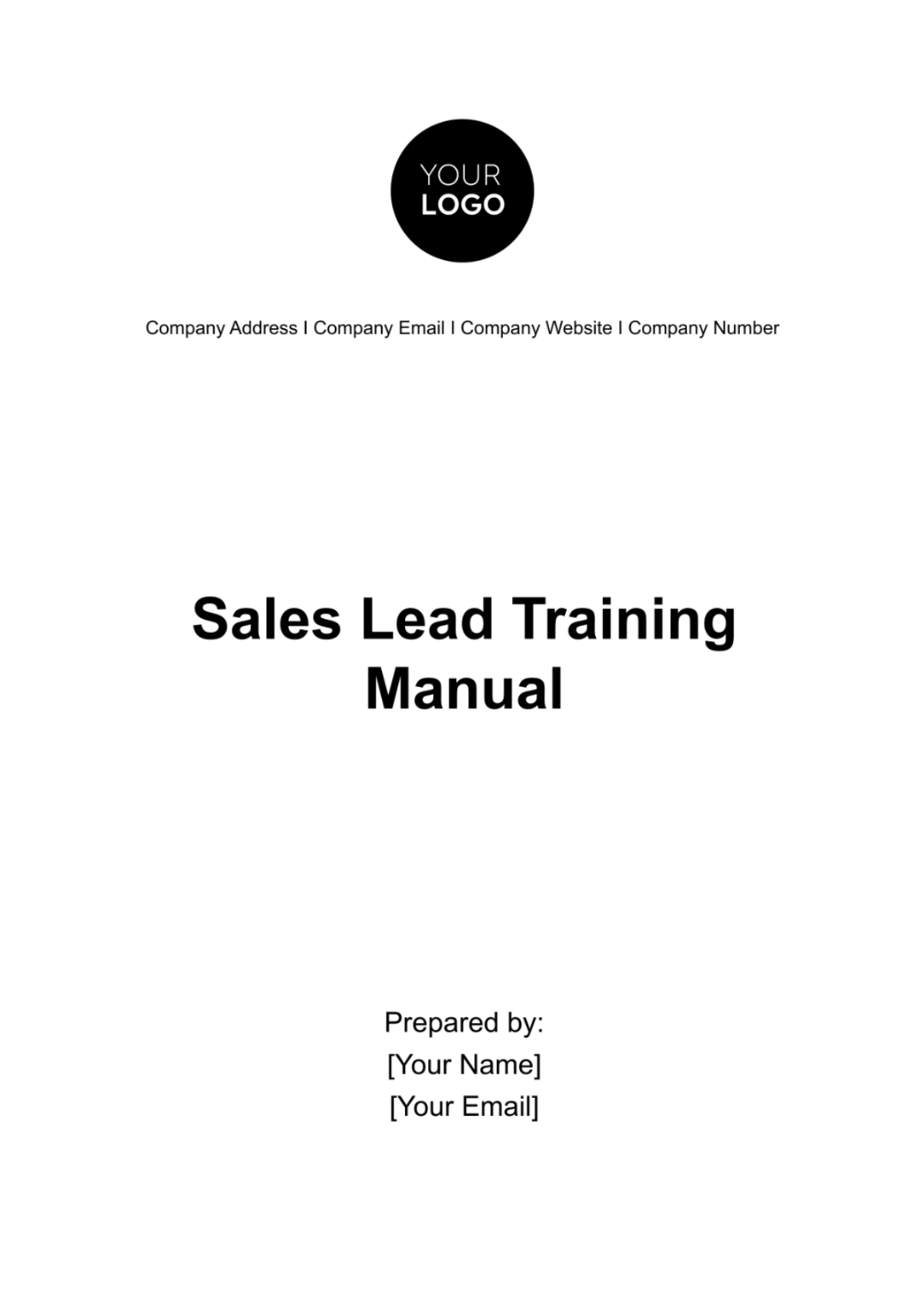
1. Introduction
Welcome to [Your Company Name]'s Sales Lead Training Manual, your go-to resource for mastering the art and science of sales lead management. As you are aware, the competitive landscape is continually evolving, making it more essential than ever to be equipped with a robust skill set and a thorough understanding of effective sales strategies. This manual is not merely a handbook; it's a comprehensive guide created to take you through each aspect of the sales process, from generating qualified leads to closing successful deals.
In the modern sales environment, traditional methods are no longer sufficient to guarantee success. Today’s market demands a multifaceted approach that involves a deep understanding of consumer behaviors, technological savviness, and adept interpersonal skills. This manual aims to cover all these areas and more. It includes insights into leveraging [Your Company Name]'s state-of-the-art Customer Relationship Management (CRM) software, best practices for lead qualification and scoring, and key performance indicators (KPIs) that will help you evaluate your own performance as well as that of the sales strategies in place.
By adhering to the methods and practices laid out in this manual, you will be setting yourself up for success in [Your Company Name]'s sales team. You will be better prepared to meet and exceed your sales targets, contribute positively to the team, and add value to our esteemed clientele. Consider this manual your roadmap to becoming an elite sales professional within [Your Company Name].
2. Objectives
The core objectives of this Sales Lead Training Manual are meticulously designed to create a foundation for your sales career at [Your Company Name]. By the end of this training, you should have a comprehensive grasp of the following critical areas:
2.1. Understand the Fundamentals of Lead Generation and Conversion
The importance of this objective cannot be overstated. Effective lead generation is the lifeblood of any successful sales operation. You will learn proven techniques to identify, engage, and qualify prospective customers, thereby creating a pipeline of opportunities ripe for conversion. From tapping into various lead sources like social media and networking events to discerning high-value prospects, this manual will furnish you with the tools needed to excel in this critical function.
2.2. Familiarize the Team with [Company Name]'s CRM Software
Customer Relationship Management (CRM) software is instrumental in managing interactions with potential and existing customers. This objective aims to provide a detailed overview of our proprietary CRM software, covering aspects from data entry and record-keeping to advanced features like automation and analytics. A deep understanding of this platform will empower you to track customer behavior, log essential data, and derive actionable insights, which are invaluable for converting and retaining customers.
2.3. Introduce Key Performance Indicators (KPIs) for Evaluating Success
In sales, measurable outcomes are essential for gauging performance and for fine-tuning strategies. Through this manual, we introduce you to the key performance indicators that [Your Company Name] uses to evaluate both individual and team success. From lead conversion rates to customer retention metrics and return on investment (ROI), understanding these KPIs will enable you to set realistic goals, track your progress, and identify areas for improvement.
By focusing on these objectives, you'll equip yourself with a holistic understanding of [Your Company Name]'s sales ecosystem, thereby positioning yourself for both immediate and long-term success.
3. Lead Generation
The cornerstone of a successful sales operation is the ability to consistently generate high-quality leads. This section delves deeper into various aspects of lead generation, providing you with actionable strategies to source, qualify, and engage potential customers.
3.1. Sources of Leads
Online Marketing:
Online marketing is one of the most effective ways to generate leads in today's digital age. This includes tactics like Search Engine Optimization (SEO), Pay-Per-Click (PPC) advertising, and email marketing campaigns. By optimizing for keywords that potential customers are likely to use, you can drive targeted traffic to our website, thereby increasing the chances of lead conversion.
Social Media:
Platforms like LinkedIn, Twitter, and Facebook are indispensable tools for connecting with potential leads. Regular posts, sponsored ads, and direct outreach on these platforms can help engage prospects and guide them into the sales funnel.
Networking Events:
Trade shows, seminars, and other industry-specific events offer valuable opportunities for lead generation. At these events, you can personally interact with potential clients, understand their needs, and collect contact information for future outreach.
3.2. Lead Qualification
Qualifying leads is essential for ensuring that the sales team focuses its efforts on prospects that have a higher probability of conversion. This involves evaluating leads based on a set of predefined criteria.
Criteria | Description | Additional Notes |
Need | Does the prospect have a need for our product? | Focus on problem-solving, not selling. |
Budget | Does the prospect have the budget for our product? | Avoid wasting time on low-budget leads. |
Decision-Maker | Is the prospect the decision-maker or do they have access to the decision-maker? | Speeds up the sales process. |
Timeline | What is the prospect's purchasing timeline? | Helps prioritize leads. |
Competition | Are they considering other vendors? | Provides insights into what you're up against. |
By understanding these lead sources and qualification criteria, you'll be better positioned to identify potential customers who are not just interested in what [Your Company Name] has to offer but are also capable and ready to make a purchase. This ensures a more efficient and effective sales process.
4. Lead Scoring
Lead scoring is a pivotal practice in managing and prioritizing sales leads effectively. By assigning a numerical value to leads based on various factors, you can quickly identify which ones are most likely to convert. This approach is crucial for optimizing your time and resources and making informed decisions about how to interact with each lead.
4.1. Scoring Criteria
Understanding the criteria by which leads are scored can significantly streamline the qualification process. Here are some key indicators:
4.2. Behavioral Indicators
These involve tracking the lead’s activities such as website visits, page views, and interaction with marketing emails. For instance, a lead who has visited our pricing page multiple times might be closer to making a purchase decision than one who has only viewed our homepage.
4.3. Demographic Information
Details like job title, industry, and location can be incredibly insightful. For example, a C-level executive from a Fortune 500 company would potentially be scored higher than an intern from a startup, assuming our product is aimed at larger enterprises.
4.4. Engagement Level
This refers to the frequency and quality of interactions the lead has had with our brand. It could include factors like responsiveness to sales calls, participation in webinars, or engagement with our social media posts. A high level of engagement generally suggests a higher level of interest and thus a higher lead score.
4.5. Scoring System
It's essential to have a standardized system for assigning scores based on the criteria mentioned above. Here's how scores generally correlate to lead status:
Score Range | Lead Status | Interpretation | Action to Take |
80-100 | Hot Lead | These leads have shown a high level of interest and engagement and are likely ready to convert. | Immediate follow-up with a personalized approach. |
50-79 | Warm Lead | These leads are interested but may require more nurturing before they are ready to make a purchase. | Implement targeted nurturing campaigns. |
0-49 | Cold Lead | These leads have shown minimal engagement and are less likely to convert in the short term. | Re-engage through educational content or reassign. |
The objective is to move leads up the scoring ladder, transforming cold leads into warm ones, and warm leads into hot ones. By systematically applying the lead scoring methodology outlined in this manual, you'll not only be able to prioritize leads more effectively but also develop a more nuanced understanding of [Your Company Name]'s customer base.
5. Customer Relationship Management (CRM)
In today's competitive market, effective management of customer relationships is essential for sustainable growth. A CRM system acts as the backbone for all your customer interactions, providing a centralized platform where the sales team can log, track, and analyze customer data.
5.1. Introduction to [CRM Software]
Functionality:
[CRM Software] is not merely a database but a robust platform that integrates sales, marketing, and customer service functionalities. From lead generation to customer retention, it automates and streamlines a host of sales processes, including email campaigns, task management, and follow-ups. This allows the sales team to focus on what they do best—selling.
Interface:
Ease of use is a crucial feature of [CRM Software]. With its intuitive dashboard, real-time analytics, and customizable features, navigating through the system is a breeze. All necessary information, from lead scores to client histories, is available at a glance, enabling quick decision-making.
5.2. Data Entry and Management
Data entry and management are the linchpins for successful CRM utilization. Accurate data enables precise analytics, which in turn drive informed business decisions. Here are some key aspects to focus on:
Logging Interactions. Every touchpoint with a lead or a customer should be logged in the CRM system. This could include email correspondence, phone calls, and face-to-face meetings. Documenting these interactions provides valuable context for the sales team and helps in tailoring personalized communication strategies for different leads.
Updating Lead Status. As you engage with leads and move them through the sales funnel, their statuses will change. It is vital to keep this information updated in the CRM system. This ensures that all team members have real-time access to the most current data, allowing for more effective collaboration and strategy planning.
By effectively using the CRM for lead management, you’re not just maintaining a database; you’re creating a powerful asset that can significantly improve the efficiency and effectiveness of [Your Company Name]'s sales processes.
6. Sales Techniques
Mastering effective sales techniques is vital for any sales team aiming to boost their lead conversion rates. The strategies employed when interacting with prospects can make a significant difference in the success of a deal. This section delves into some essential techniques that are encouraged within [Your Company Name].
6.1. Consultative Selling
Consultative selling goes beyond just pitching a product; it's about understanding the customer's unique needs and providing solutions that deliver real value. Here's how to go about it:
Listen to Customer Needs. The initial interaction with a potential customer is crucial. This is the time to ask probing questions to uncover their specific needs and pain points. Active listening is key here; not only does it enable you to tailor your pitch, but it also helps build rapport and trust with the client.
Offer Tailored Solutions. Once you understand the customer’s needs, present your products or services as the solution to their problems. Make sure to highlight how the features of what you're offering directly address their unique needs. Personalizing your approach in this manner greatly increases the likelihood of a successful conversion.
6.2. Upselling and Cross-Selling
The ability to upsell or cross-sell effectively can significantly increase the value of a transaction. These techniques should be tactfully applied so that they come off as offering additional value rather than pushing for a more expensive purchase. Here’s how:
Identifying Opportunities. Always be on the lookout for opportunities to upsell or cross-sell. For instance, if a client is purchasing a software subscription, perhaps they could benefit from an extended warranty or a premium feature add-on. Timing is essential; the ideal moment for upselling is usually after you've provided value but before the transaction is finalized.
Maximizing Transaction Value. The ultimate aim of upselling and cross-selling is to increase the transaction value while still providing the customer with additional benefits. When suggesting add-ons or higher-tier packages, always keep the customer's needs in mind and ensure what you're offering aligns with those needs.
By adopting consultative selling and becoming proficient in upselling and cross-selling, the sales team at [Your Company Name] will be better equipped to identify opportunities, satisfy customer needs, and consequently improve lead conversion rates. This not only boosts revenue but also fosters long-term relationships with satisfied customers.
7. Key Performance Indicators (KPIs)
Key Performance Indicators (KPIs) are quantifiable measurements used to gauge the effectiveness of a sales team's strategies over a specific period. They are crucial for understanding performance and making data-driven decisions for ongoing improvement. Below are some primary KPIs that [Your Company Name]'s sales team should aim to achieve:
Lead Conversion Rate
Target: [00]%
The Lead Conversion Rate is a vital metric that measures the efficiency of the sales team in converting leads into actual customers. A target of [00]% has been set to push the team to improve upon past performance. This metric not only reflects the effectiveness of your sales funnel but also your ability to qualify and prioritize leads. Monitoring this regularly can provide insights into which strategies are working and which need adjustment.
Customer Retention Rate
Target: [00]%
Customer retention is equally, if not more, important than acquisition. It costs significantly less to keep an existing customer than to acquire a new one. Hence, a target retention rate of [00]% has been set. This will involve not just sales, but also customer service and support to ensure that customers are satisfied and choose to continue doing business with [Your Company Name]. Analyzing customer churn reasons and implementing strategies to mitigate them are vital for achieving this target.
Return on Investment (ROI)
Target: [0]x
The ROI KPI evaluates the profitability of the sales and marketing campaigns. A minimum target of a [0]x return has been set to ensure that the resources allocated to sales and marketing activities are justified. This is calculated by dividing the net profit from these activities by the total costs involved. Regular monitoring and adjustments to the strategies will be required to meet or exceed this target.
By constantly tracking these KPIs and adjusting strategies accordingly, [Your Company Name] aims to not only meet but exceed these targets. Achieving these KPIs is a collective effort that involves the entire sales team, as well as support from marketing and customer service departments.
9. Conclusion
In wrapping up, this Sales Lead Training Manual serves as an invaluable resource for optimizing lead generation and conversion strategies within [Your Company Name]. By adhering to the guidelines, methods, and techniques outlined herein, you not only arm yourself with effective tools but also align your efforts with the company’s overarching sales objectives. The manual covers everything from the foundational concepts of lead sourcing and qualification to advanced strategies like consultative selling and effective CRM use. By focusing on the targeted Key Performance Indicators and continuously monitoring and adjusting your approaches accordingly, you contribute to a cycle of constant improvement. In doing so, you will be well-positioned to excel in your role, thereby playing a critical part in achieving the company's goals for customer retention and revenue growth.
9. Appendices (As Attachments)
Appendix A: [Your Company Name]'s Code of Conduct
Appendix B: CRM User Guide
Appendix C: Sample Scripts
10. Contact Information
For any queries or clarifications regarding this manual, please reach out to:
Name: [Your Name]
Email: [Your Email]
Phone: [Contact Phone]
This Sales Lead Training Manual is an evolving document subject to periodic reviews and updates. Stay tuned for the most current sales strategies and tools to continue excelling in your role.
- 100% Customizable, free editor
- Access 1 Million+ Templates, photo’s & graphics
- Download or share as a template
- Click and replace photos, graphics, text, backgrounds
- Resize, crop, AI write & more
- Access advanced editor
Unlock your team's potential with our Sales Lead Training Manual Template, available on Template.net. Crafted by experts, this editable and customizable document empowers professionals with cutting-edge strategies. Utilize our AI Editor Tool to personalize content and enhance keyword optimization. Elevate your sales game effortlessly with this essential resource.
